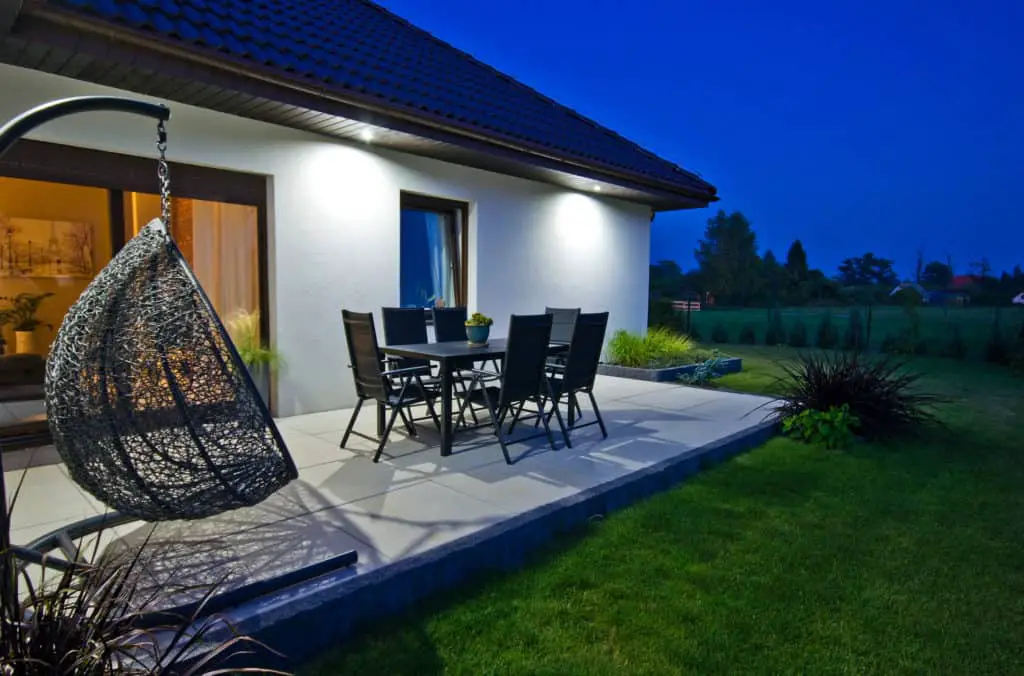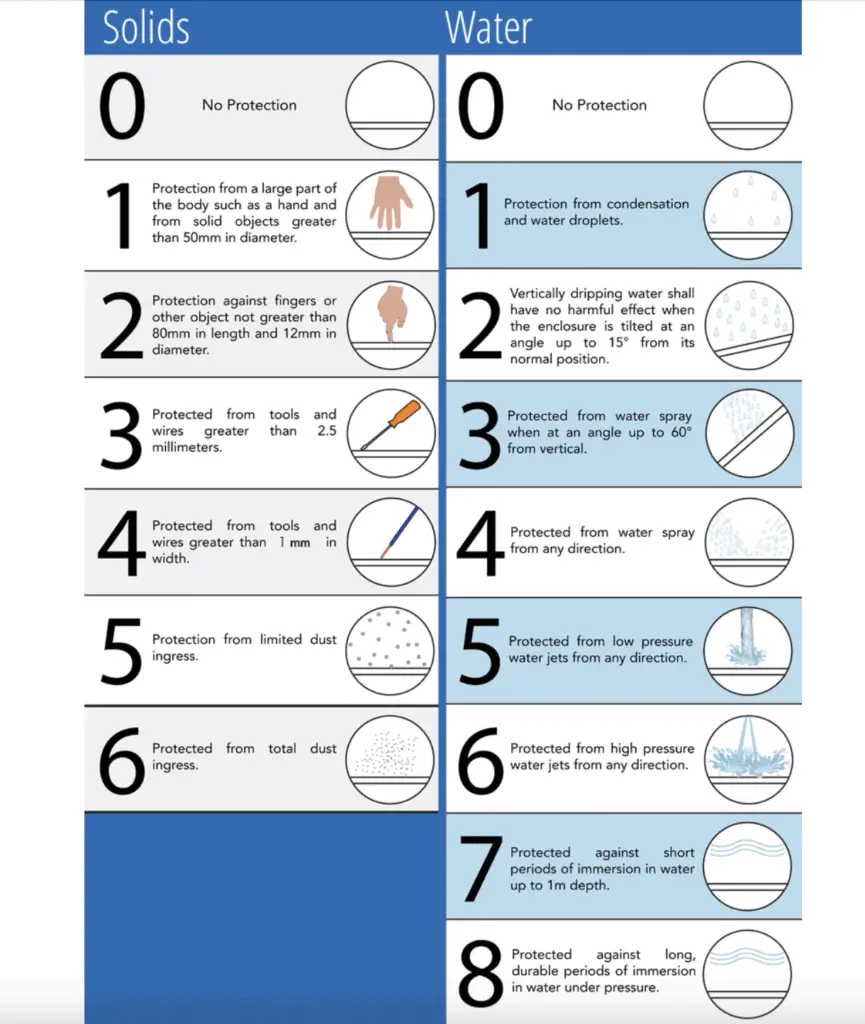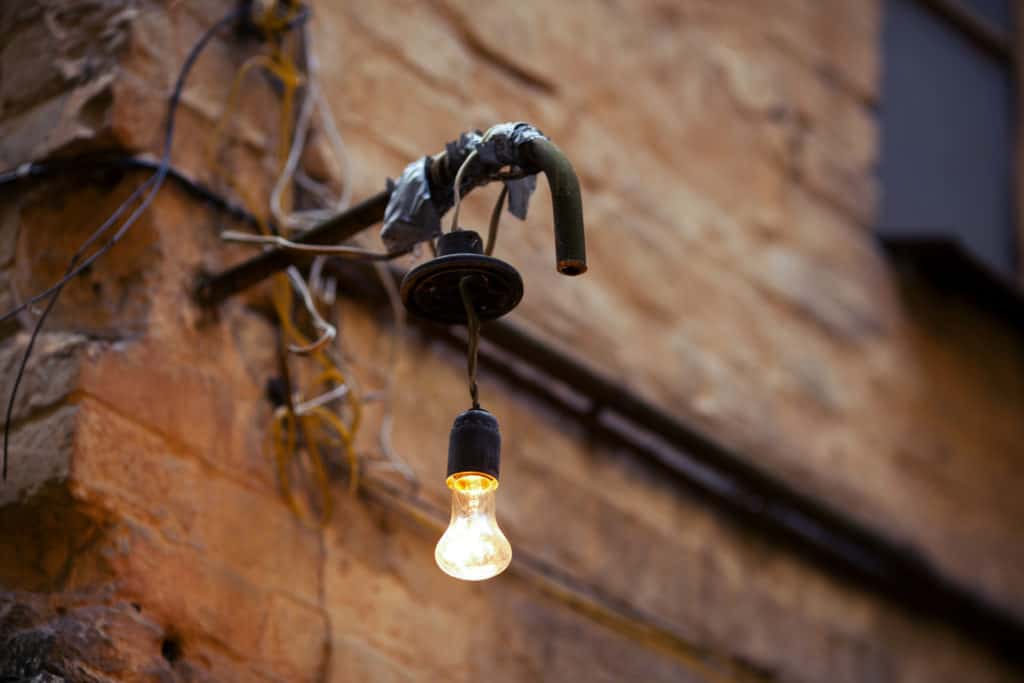It’s getting to the warmer time of the year when my phone is starting to ring with potential customers enquiring about outdoor lighting. As the either improves we all want to spend lazy evenings outside and outdoor lighting is a great way to extend the fun.
I tend to notice patterns of questioning from customers with a common question, can I use LED light bulbs outside? being asked several times this week. I thought a post covering the topic and a few related questions would provide some good value to readers so hopefully, you find this brief overview useful, enjoy!

Before you start plugging indoor lights into outdoor fixtures, there are some vital points to understand first. Not all fixtures are created equal, just as not all light bulbs are made the same. The location of outdoor fixtures also plays a significant role in deciding if an indoor bulb is adequate for the outdoor space.
Can You Use Indoor Light Bulbs Outside?
Indoor light bulbs can be used outside in the correct waterproof light fixture. Waterproof fixtures are designed specifically for places known to expect rain, snow, and high precipitation levels throughout the year. A UL (Underwriter’s Laboratory) listing and an IP (Ingress Protection) rating determine what an outdoor fixture is set up to be used for.
UL listings will appear as “UL Listed,” “suitable for damp locations,” or “suitable for wet locations.” A generic “UL Listed” refers to a dry indoor location, while the other two are easily identifiable as damp and wet locations that could be indoors or outdoors.
It seems from my research that UL listed is a phrase common to the US. As a UK based electrician, I am much more familiar with ingress protection (or IP rating for short) As the majority of my readers are from both parts of the world I will discuss both in this article!
Ingress protection rating is used on a scale as the image below demonstrates. It’s important to check that the IP rating of your light fitting used outside is suitably rated for the environment it is going to be used in.

Now, let’s look at four commonly used indoor light bulbs and if they can be used outdoors:
Can Halogen Light Bulbs be used Outside?
Halogen light bulbs designed for indoors should not be used in outdoor settings. However, two exceptions can be applied where a halogen light can be used outside. The first exception will be if the halogen bulb has a thick glass protection layer designed for rainwater and thermal shock. The second exception is if the bulb has been rated and approved for outdoor exposure, often seen in landscape floodlights.
Can Incandescent Light Bulbs be used Outside?
Indoor incandescent light bulbs can be used outdoors only in protected and enclosed areas not exposed to rain, snow, or damp environments (such as IP rated enclosures mentioned above) There are incandescent lights rated for outdoors if these are your preferred style, but double-check the packaging to ensure they are for outdoor use before installing.
You May Also Enjoy: 1 Gang and 2 Gang Lighting Explained
Can Fluorescent Light Bulbs be used Outside?
Fluorescent light bulbs are not typically used outside, but if there is a reason that one is needed, it is essential to pay attention to the temperature rating. There will be either an ambient or operating temperature specified on the packaging or the light itself. If the outdoor temperature becomes too cold or too hot, the light will not work correctly, if at all.
It’s worth remembering that even using fluorescents indoors requires the same attention to temperature ratings since shops, sheds, and garages will have fluctuating temperatures even if they are insulated.
Can Compact Fluorescent Lights be used Outside?
Spiral CFLs (compact fluorescent lights) are best kept indoors. CFL lights will work in warmer weather like fluorescents but not when the temperature drops in the fall and winter seasons. Referring to the IP rating, most CFL bulbs are rated for dry environments found inside the home or office. That’s not to say they cannot be placed in an IP rated fitting but they won’t perform nearly as well as other types of bulbs available. (My favourite brand of Spiral CFLs is linked to on Amazon here)
Can LED light bulbs be used outdoors?
LED (Light Emitting Diode) light bulbs can be used indoors and outdoors providing they are in a suitable IP rated enclosure. Unlike other bulbs that do not react well to colder weather, LEDs will turn on and off as expected since they do not require heat to work correctly.
These lights are well-suited for damp conditions, rain, snow, and above-average precipitation. Operating from a cooler temperature ensures the efficiency of LED bulbs during fall and winter when the temperatures are consistently colder than the rest of the year.
If we have a non-replaceable style LED light (ie the whole light fitting is an LED, not just a standard fitting with a replacement LED bulb) we need to check if the light is ok to be placed outside. Again check the IP rating against the chart above and if it complies we are good to go.
Because of their long-life span, reduced energy consumption, resistance to impact and vibrations, providing bright and clear light, and being high-efficiency bulbs, LEDs are the perfect year-round light bulb. Dusk to Dawn, Smart Light, and the Yellow Bugs Light Bulb are three LED lights that have been created explicitly for outdoor use.
A Dusk to Dawn bulb (linked to on Amazon here) will turn on and off automatically as the sun sets and rises. The Smart Light is compatible with smart home devices with brightness and colour-changing abilities. The Yellow Bugs Light Bulb is optimal for maintaining the amber yellow colour without attracting insects that usually swarm once the light comes on.

Can I Use Any Light Bulb Outdoors?
Most light bulbs can be used outdoors provided they are enclosed in a suitable weatherproof light fixture (designated by the fixtures IP rating) However, some bulb types will perform better than others with the temperature fluctuations of operating outdoors.
All these light bulbs below require being placed in suitable fitting, they cannot just be left to the elements alone. But assuming that criteria are met, these are the light bulbs that will perform better than others:
- LED and Metal Halide lights can be used both indoors and outdoors
- Compact fluorescent lights (CFL) can be used outdoors if clearly stated on the item packaging; otherwise, keep CFL lights indoors as they don’t like the temperature variations.
- Halogen bulbs are best used indoors unless there is a thick glass layer for outdoor protection, and the bulb has been rated for outdoors.
- Incandescent lights that are completely covered and protected can be used outdoors, but not if any water or moisture has access to the bulb.
- Xenon bulbs can be used indoors or outdoors based on the rating depicted on the packaging.
Indoor and outdoor light bulbs are not entirely interchangeable. Some outdoor light bulbs will work when installed inside, but very few indoor intended bulbs will work when moved outside. Review the UL listing and IP rating to determine if an indoor light will work as it is designed to if moved outdoors.
This will give you a better understanding of where the bulb is meant to be installed; dry, damp, or wet. If the UL states dry only and the light needing to be replaced is located in an uncovered area where rain falls, an indoor light bulb should not be used. It’s worth also remembering that a poor-quality bulb can cause problems and trip breakers as well.
What’s the Difference Between Indoor and Outdoor Lights?
Indoor lights are not designed with corrosion or rain in mind. The lights used indoors can be the same brands as those used in outdoor environments, but the difference is in the rating and intended use. Indoor lights are not sealed to protect the inner workings against moisture from rain, snow, fog, and areas with high humidity levels.
Using a light outside that has not been designed for the purpose leads to corrosion, rust and potential for electric shock. When a bulb becomes corroded, or rain gets in, electrocution hazards become a real danger.
Outdoor bulbs are the opposite of those used indoors and have sealed bodies that keep all moisture out, making them both weatherproof and waterproof. Bulbs are also rated for dry, damp, and wet areas to ensure proper performance in different environments. Rust and corrosion are possible but unlikely, given the safety features used to attract consumers.
What Happens if You Use Indoor Light Fixtures Outside?
If you decide to use indoor light fixtures outside, there are a few things to look out for. Indoor lights are not sealed or waterproof, so the risk of being shocked and electrocuted is very present should the light bulb not be in an enclosed area.
Rust and corrosion can occur more rapidly, posing another risk for electrocution. Bulbs that are not suitable for wet locations or colder temperatures can experience thermal shock from rain or snow, and the glass will start to fracture. Indoor lights used outside will need to be replaced more frequently since they cannot withstand the elements. If the temperature gets too hot or too cold for the bulb’s temperature limits, it will stop working.
May Also Enjoy: Are LED Lights AC or DC
Conclusion
As we can see the answer to the question, can you use indoor light bulbs outside? largely depends on the protection offered by the light fixture that we are going to be placing the bulb into. Assuming the light fixture has a suitable outdoor rating then we are best to choose LED light bulbs where possible as these are able to cope with the temperature fluctuations.
It’s also worth remembering that over time the protection rating of the light fixture will degrade. Seals that were designed to keep rain and moisture out start to fail as they become brittle from years in the sun and the rain. Whenever I replace an outdoor light for a customer I always recommend a new LED fitting (that is suitably IP rated) as these work the best and are the cheapest to run in my experience.
Disclaimer: If in any doubt about the suitability of electrical items for their environment contact a local electrician who can advise in person. This article is intended as a general guide only and should be treated as such. All responsibility for safety resides with the reader.

